Research
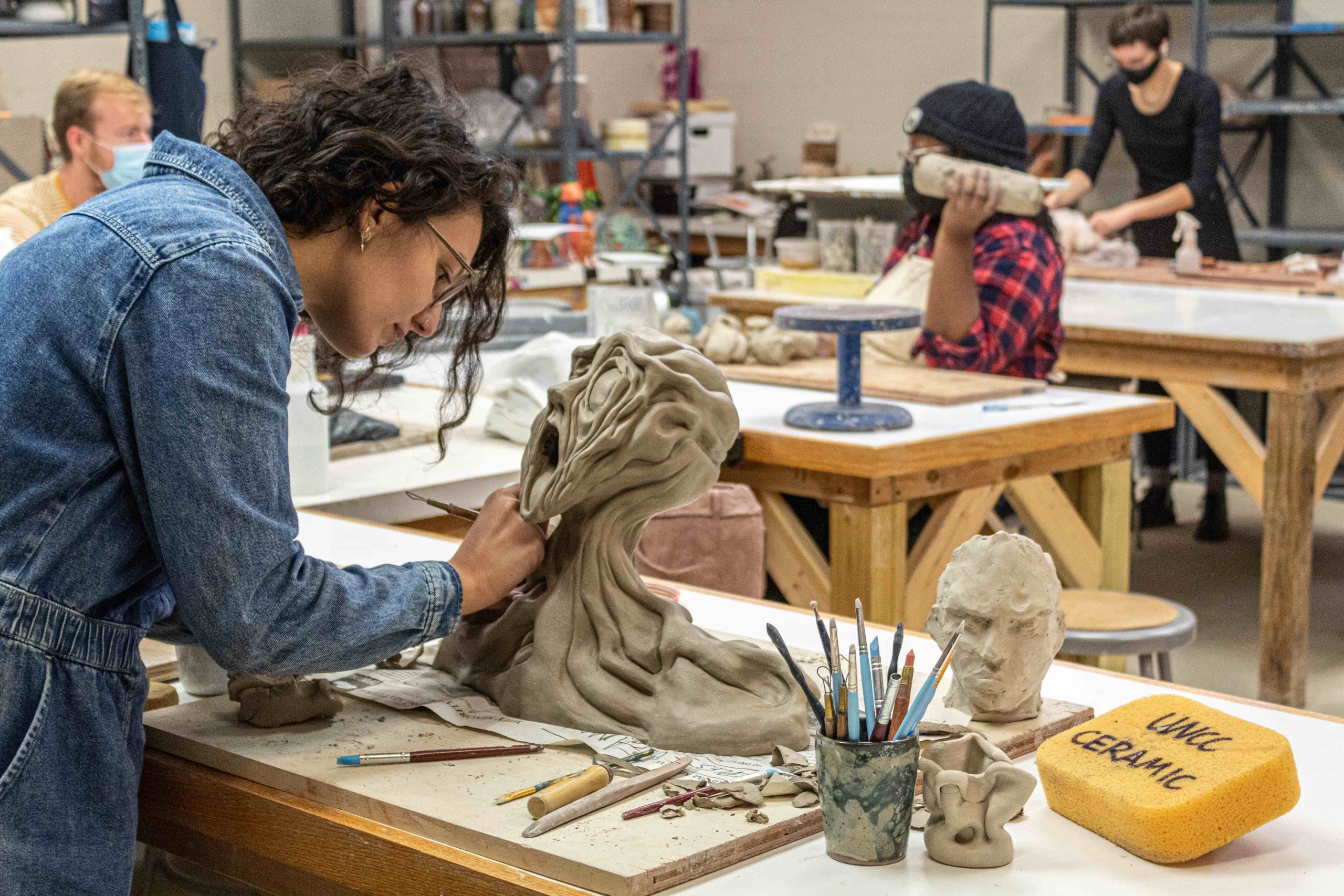
Research – Art & Art History
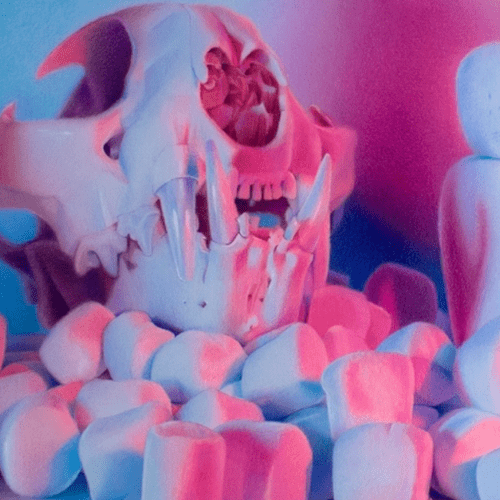
JB Burke | | Professor Jessica Burke’s (J.B.) research focuses on drawing using both traditional media and digital media. Her work examines narrative, identity and world building that is informed by anatomy, children’s literature, food styling, set-design and memory. Her work has been widely exhibited in respected venues nationally and internationally. She has been awarded artist residencies in Santa Fe, New Mexico; Cork, Ireland; Key West, Florida; Cove Park, Scotland and in Budapest, Hungary. Her drawings have been published in Manifest’s International Drawing Annual (INDA) 13; Studio Visit Magazine; Artist’s Magazine’s Strokes of Genius 9: The Best of Drawing, Strokes of Genius 16: The Best of Drawing and Art for Everyone, a textbook from University Press. She was recently awarded a North Carolina Arts and Science Council Grant based on her digital media practice which reflects a dedication to drawing as a creative practice that is both innovative and responsive to cultural conditions. She has shared her pedagogical research at the SECAC Annual Conference and at the Biennial Foundations in Art: Theory and Education (FATE) conference.

Robert (Bobby) Campbell | Professor Robert (Bobby) Campbell’s research includes community-engaged design, graphic novels, comics, and sequential art. Most recently he redesigned and coded the CHAMPS dashboard website in partnership with The Academy for Population Health Innovation (APHI). This unique collaboration between UNC Charlotte and Mecklenburg County Public Health, centered on designing a friendly, inviting, and engaging experience for a range of audiences in Mecklenburg County. The enhanced site appeals to diverse prospective visitors including: those living with HIV, those concerned about their HIV status, medical professionals treating the condition, and others in nonprofit, health, and governmental roles in Mecklenburg County.

Jane Dalton | Dr. Jane Dalton’s research integrates studio art and teacher education, with a focus on transformative learning through contemplative pedagogy and mindfulness, via the expressive arts. Her work draws on foundational research in learning science and neuroscience, which highlights how meditation can lead to changes in brain function, structure, and behavior. Dr. Dalton explores how contemplative art practices can foster emotional balance, improve focus, and enhance self-awareness, all of which contribute to personal growth and learning.
Her recent work includes the 2023 book The Mindful Studio: Cultivating Creativity and Well-Being in the Classroom (Davis Publications). Additionally, she has co-edited three books on contemplative practices and pedagogy in education, as well as The Whole Person: Embodying Teaching and Learning through Lectio and Visio Divina (Rowman & Littlefield). Dr. Dalton has authored or co-authored seven peer-reviewed book chapters and 11 peer-reviewed journal articles. She has also presented her research at international, national, and regional conferences. Alongside her academic work, she maintains an active studio practice.
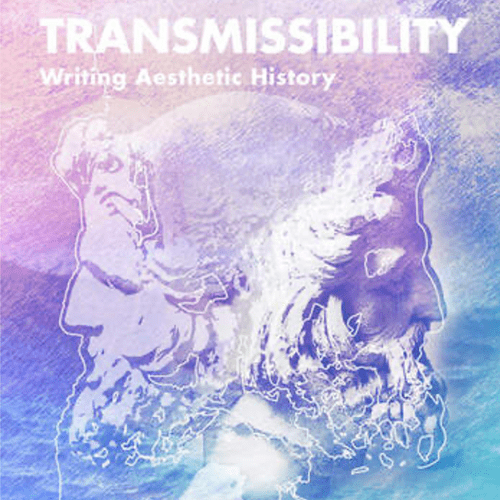
Jae Emerling | Dr. Jae Emerling’s research includes art history, philosophy, modernism, visual culture studies, critical theory, aesthetics, history of photography, and memory and history. Most recently his fourth book was published in August of 2023. Entitled, Transmissibility: Writing Aesthetic History, this work has already received rave reviews including laudable statements such as “Jae Emerling accompanies his reader every step of the way in this exciting and erudite text: he works side-by-side with you to face the challenge of making sense of what it means to encounter art” (Homi Bhabha, Harvard University); “Very occasionally a writer will come along who changes what it might mean to write about art and culture, giving us the permission to take new liberties. In this dazzling, innovative and courageous book, Jae Emerling enacts a radical approach to thinking the intersections of the history and ontology of art” (Kamini Vellodi, University of Edinburgh); and “Jae Emerling has done the remarkable. He argues convincingly that transmissibility is both of and for aesthetics (where aesthetics is critical and transformative thinking), but that it is also of and for history too; which is to say, that it is attentive to both the ontological and the experimental-creative historiographic properties of art” (Marquard Smith, University College London). Emerling is also a participating scholar in UNC Charlotte’s Center for Humane AI Studies.
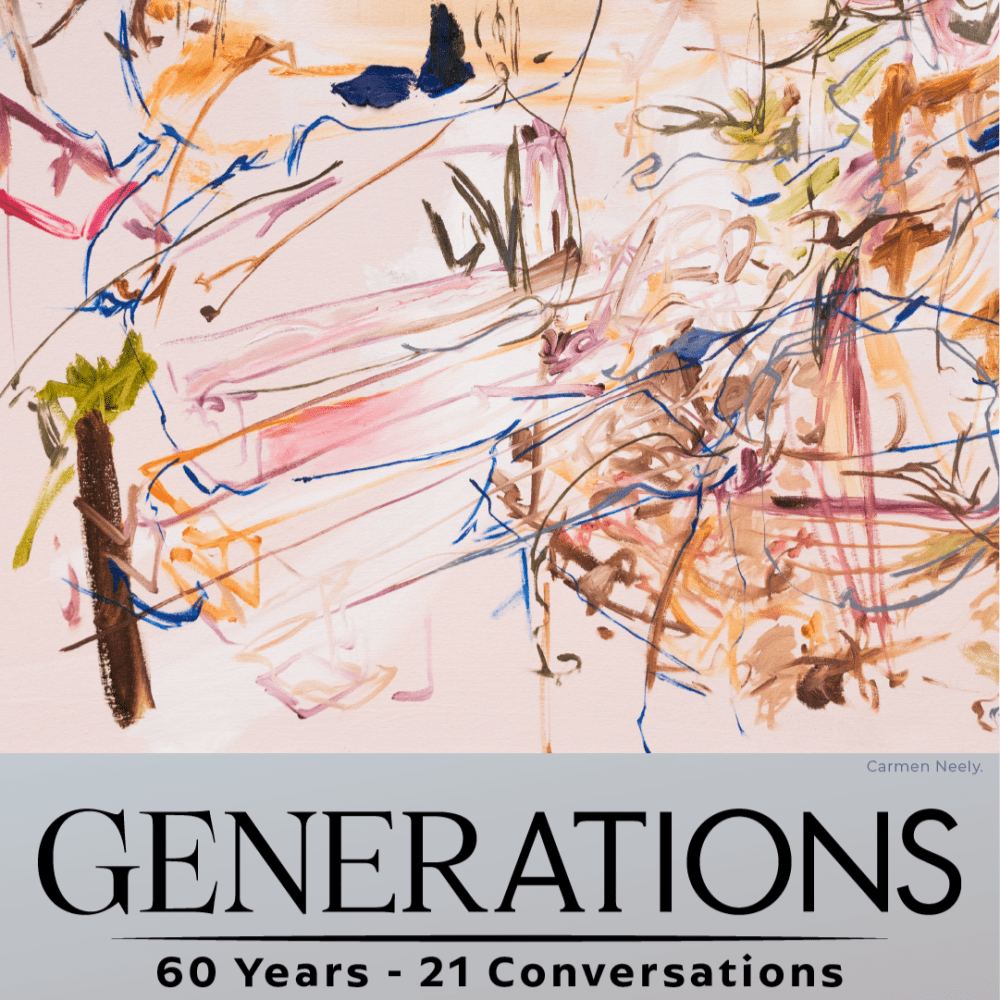
James Frakes | Dr. James Frakes’s research includes ancient Roman art and architecture, ancient Mediterranean visual culture, and UNC Charlotte Art & Art History departmental history. He is the author of Framing Public Life: the Portico in Roman Gaul and co-editor of Beyond Boundaries: Visual Culture in the Roman Provinces. Recently, he delivered a talk at UNC Chapel Hill’s Consortium for Middle Eastern Studies titled “The temple at Khirbet et-Tannur: Interpreting arrival within an epiphanic landscape.” In recognition of the 60th anniversary of the Department of Art & Art History (2024-25), Frakes curated the celebratory exhibition and has documented the department’s history in a forthcoming book. Learn more about that work in this digital feature.

Heather D. Freeman | Heather Freeman is Professor of Digital Media, and her research encompasses diverse digital technologies, from podcasting and animation, to game design and AI. She is a participating scholar in UNC Charlotte’s Center for Humane AI Studies. Through these media, Freeman explores diverse topics. These include sharing humanities scholarship to encourage religious literacy in general audiences, creative practices in the history of Western esotericism, and how humans tend to have ‘animistic’ relationships with digital technologies. Freeman most recently completed the three-season podcast series Magic in the United States which was produced and distributed by PRX and funded by a grant from the National Endowment for the Humanities. This podcast introduces general audiences to some of the many magical, spiritual, and marginalized religious practices in American history. Stories are carefully crafted and mixed to encourage audiences to be curious about the vast diversity of religious beliefs and practices throughout American history. Freeman’s previous podcast series, Familiar Shapes, explored parallels between the printing press during the early modern witch trials and bots on social media during the 2010s, focusing on how dis- and misinformation can spread in similar ways through different communication technologies. Freeman’s other works in animation, games, and mixed media prints can be viewed at her website.
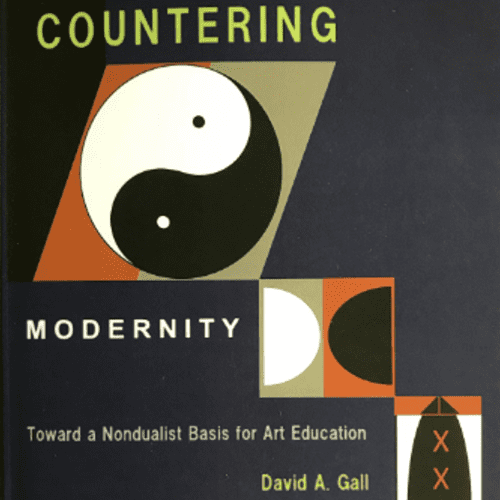
David Gall | Dr. David Gall’s research areas include art education, aesthetic, educational philosophy, art theory, and semiotics. He is currently working on a book entitled, Windows on the Pale of Art: Eurocentrism, Art and Art Education, under contract with Cambridge Scholars Press. This follows his first book Countering Modernity: Toward a Nondualist Basis for Art Education. In addition, he recently presented two papers at the National Art Education Association (NAEA) conference titled “African and Asian Bri-collage Aesthetics: Recognizing Constructivism’s Other Versions and Euro-Modernism’s Suppressed Hybridity” and “Art Education’s Eurocentrism: How to Deny Hybridity, the Substantial Presence of Others in Self.”
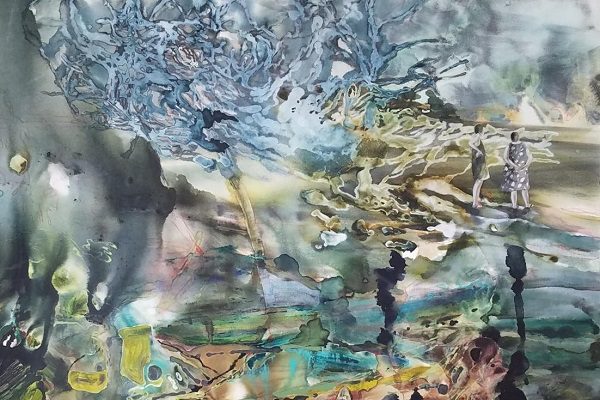
Maja Godlewska | Maja Godlewska’s creative research has been based in painting, installation, and mixed media, with excursions into photography, collaborative performance and video, multimedia site-specific projects, community engagement, and public art. Major concerns of her work have centered around the human/nature relationship and trespassing; the sublime landscape and related phenomena have been investigated against the notions of man-made orderly beauty, often viewed vis à vis its impermanence, entropy, and dissolution into the formless. There has been a fluctuation between her focus on human presence in the natural environment and on the forces of nature re-entering the structures and artifacts that we humans create, most specifically 18th-century architecture. Travel and in situ investigation have been crucial to her research and creative process and, at one point, travel itself, seen as a global phenomenon and part of attention economy, entered her artistic investigation. Godlewska has pursued her research during artist-in-residence programs in the United States, Iceland, Greenland, Italy, Chile, South Korea, Australia and Tasmania, Mauritius, Spain and Canary Islands, Faroe Islands, and Norway and has presented resulting work locally, nationally, and internationally. She recently collaborated on a project Mare Liberum, Reimagined, part of Transformative Currents: Art and Action in the Pacific Ocean, sponsored by the Getty Foundation as part of its 2024 PST ART: Art and Science Collide.
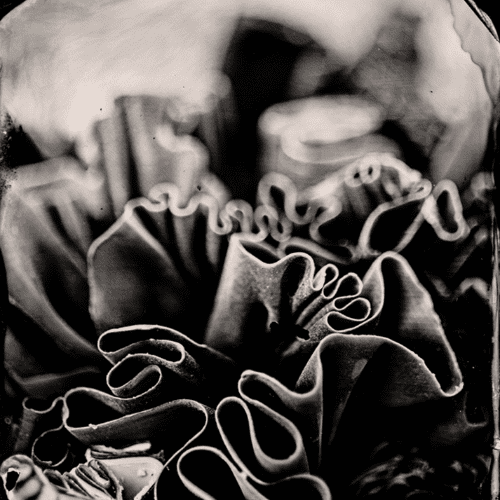
Aspen Hochhalter | Professor Aspen Hochhalter’s research focuses on experimental photographic processes. Her creative practice explores the crossover between digital technologies, historic chemical-based photographic processes, and the use of experimental materials and techniques to expand the boundaries of the photographic image.
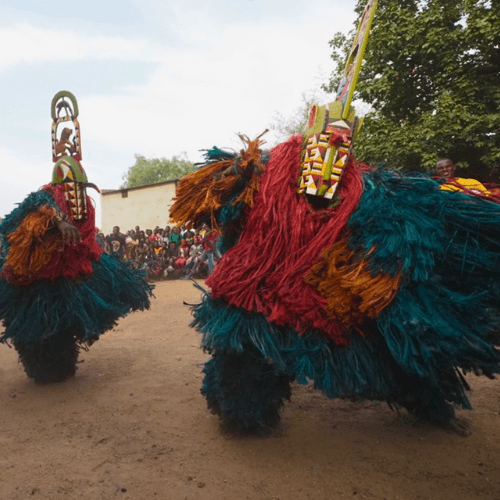
Lisa Homann | Dr. Lisa Homann’s research includes creative innovation, ethical methodologies, patronage, and performance in West African masquerade practices from the late 19th century to the present. Most recently she co-authored (with Amanda Maples, New Orleans Museum of Art and Jordan Fenton, Miami University, Ohio) a $500,000 National Endowment for the Humanities Implementation Grant for the internationally traveling exhibition and scholarly publication entitled New African Masquerades: Artistic Innovations and Collaborations. The exhibition will open at the New Orleans Museum of Art (NOMA) in Spring 2025 before traveling to a host of venues, including the Frist Art Museum, Nashville; San Antonio Museum of Art; Museum of Fine Arts, St. Petersburg; and the National Museum of African Art, Smithsonian Institution. A concurrent version of the exhibition will open at the Museum of Black Civilizations (MCN) in Dakar and travel to the Sierra Leone National Museum, Freetown, and the National Commission for Museums and Monuments Calabar, Nigeria. Organized by Amanda M. Maples, NOMA’s Françoise Billion Richardson Curator of African Art; Jordan A. Fenton, Associate Professor of Art History at Miami University (Ohio); and Homann with collaborators Hervé Youmbi and Aimé Kantoussan, Director of Research at the MCN, this exhibition tells the stories of four contemporary artists working with the medium of masquerade (Hervé Youmbi from Cameroon, Chief Ekpenyong Bassey Nsa from Nigeria, David Sanou from Burkina Faso, and Sheku Fofanah from Sierra Leone). The accompanying 264-page, full-color catalogue, which Homann co-edited and co-authored, has been published by Yale University Press.
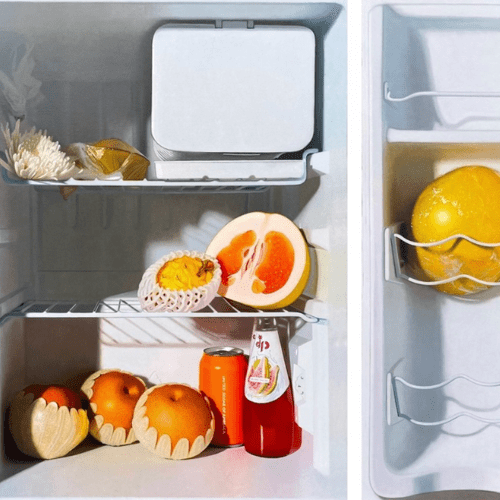
Andrew Leventis | Professor Andrew Leventis’ research includes the creation of intricately detailed oil paintings of contemporary vanitas, an early still life motif that uses flowers, fruit, and material possessions to symbolize the fleeting nature of life and passing of time. Recent exhibitions include Refrigerate After Opening at SOCO Gallery, Charlotte, NC; Late Checkout at Zepster Gallery in Brooklyn, NY; and Food in Art at the Museum of Contemporary Art in Krakow, Poland. His work has been included in national and international art fairs, and he was a 2024 artist in residence at the McColl Center, Charlotte, NC.

Jeff Murphy | Professor Jeff Murphy’s research encompasses immersive 360° video. He is currently committed to raising awareness about climate change and striving to bridge the gap between scientific data and emotional understanding. Immersive 360 video is a conduit for empathy, enabling viewers to viscerally experience the consequences of our actions on the delicate balance of our environment. Through this visceral connection, the outcome of Jeff’s research inspires dialogue, fosters environmental stewardship, and instigates positive change.
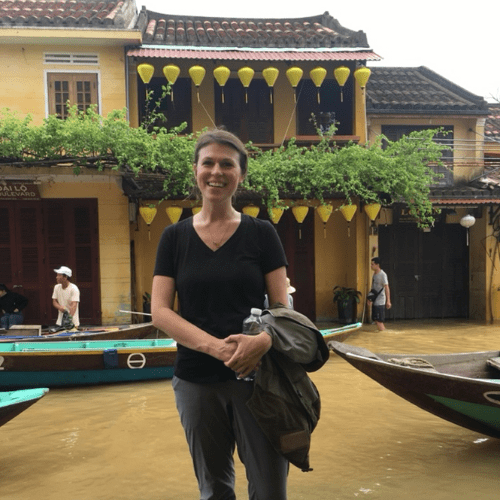
Mallory Nanny | Dr. Mallory Nanny’s research investigates how contemporary American artists represent, re-enact, and narrativize the Vietnam War in photo-based media from the late 1990s to the present. Through drawing on memory studies and narratological concepts, her work considers how artists use photography to legitimize underrepresented histories relating to the war’s impact and the Vietnamese diaspora.
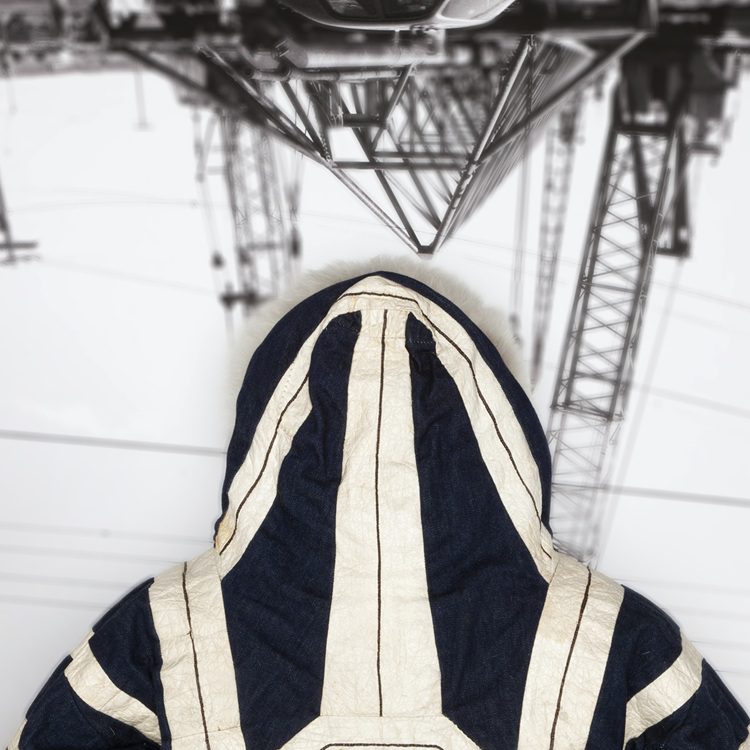
Marek Ranis | Since 2002, Marek Ranis’ artistic research has been centered on climate change, its environmental, societal, and political impact, post-colonialism, and the indigenous peoples of the Circumpolar North. From global ecological changes to climate migrations, his long-standing interest in what we now call the Anthropocene epoch constantly evolves, often focusing on the future: is planet B a toxic fad, a delusional response to the post-climate-change world?
Ranis’ research is informed by years of travel and work on location, especially in Alaska, Iceland, Greenland, Norway, Australia, and South Africa, where he had an opportunity to work with local Indigenous communities, scientists, and those directly affected by climate change. He is acutely aware of the limitations of an outside observer, and his focus expands beyond an imperial nostalgia over a melting glacier or bleaching coral reef. In recent years, Ranis has been working on diverse projects all connected by the environment and human experience, from paleoclimatology, Pacific Ocean conservancy, climate mitigation and adaptation, human migration, linguistics, and cultural diversity or the Nordic landscape and societal identity in the context of climate change.
On a formal level, Ranis moves among disciplines, from sculpture, painting, photography, and installation to performance, film, or art books. His practice could be considered nomadic, however it also includes studio-based projects, public art and curatorial work.
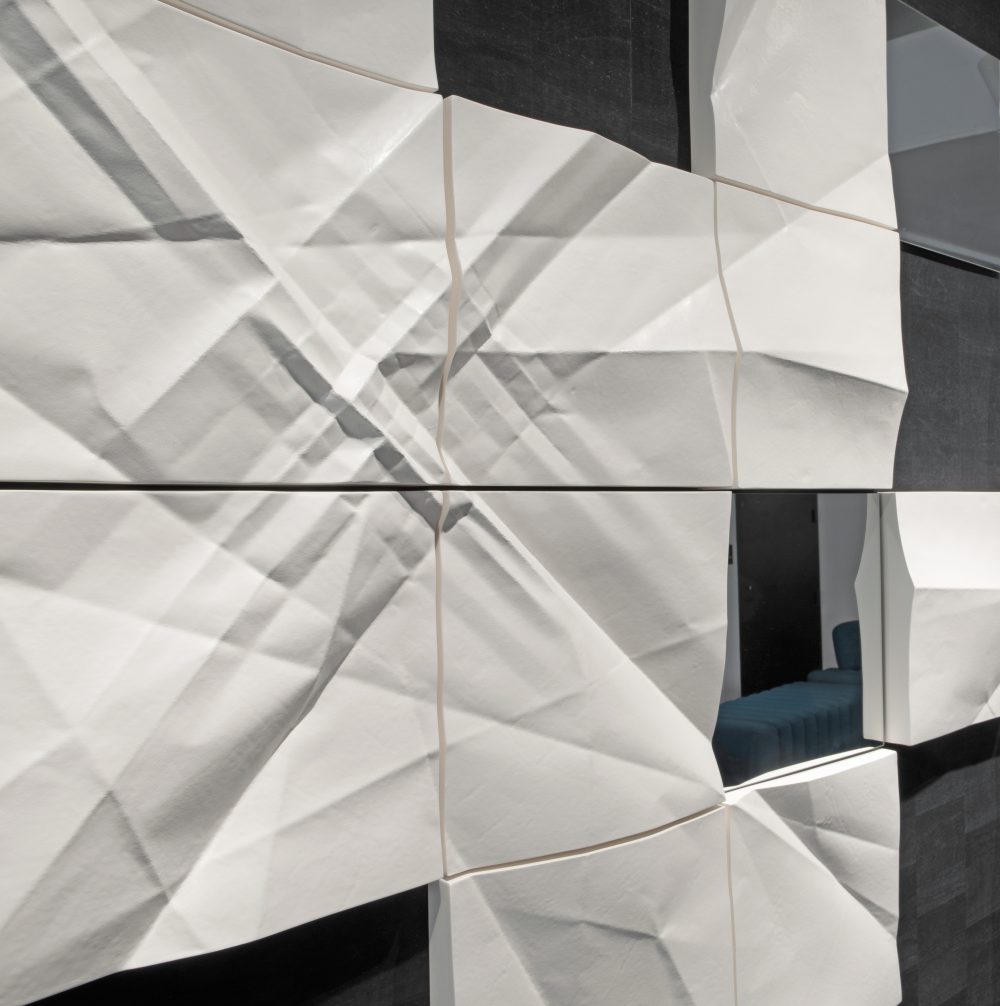
Thomas Schmidt | Thomas Schmidt’s research explores the intersection of craft, materiality, and digital technology. By integrating digital fabrication with traditional techniques, he challenges binaries between the handmade and digital, natural and artificial, and physical and virtual. A central focus of Schmidt’s practice is Post-Digital Craft, which reframes craft as a site of technological innovation rather than a static preservation of analog processes. Through 3D scanning and printing, mold-making, casting, and image transfer, he investigates how ceramics can reshape our perception of the physical world. Schmidt’s ceramics and mixed media works have been acquired by numerous national and international venues, including The Daum Museum of Contemporary Art in Sedalia, Missouri, The International Museum of Ceramics in Faenza, Italy, and the Victoria and Albert Museum in London. For more information please visit his website at www.thomasschmidt.org
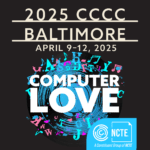
Samira Shiridevich | Assistant Professor of Graphic Design Samira Shiridevich explores the transformative potential of community-based participatory, horizontal, and co-design approaches to drive social change. Departing from traditional graphic design methods, the horizontal approach prioritizes collaboration, inclusivity, and the integration of diverse perspectives. By centering community voices and contextual insights, the horizontal approach ensures that solutions are not only functional but also deeply embedded in the lived experiences of those they serve, fostering meaningful relationships that extend beyond the project’s duration. Through this work, Shiridevich engages communities in the co-creation of innovative, inclusive, and sustainable design solutions that address pressing social issues and empower marginalized groups. In the 24-25 academic year, she will present her research in four national and international conferences: the AIGA Design Conference, SECAC, CUMULUS 2024, and the Conference on College Composition & Communication.

Christina Singer | Professor Christina Singer’s research interest includes ux/ui design, equitable design, and design research. Most recently her article titled, “Activating Qualitative Data and Building Equitable Visualizations” was published in Intercom, an industry magazine published for the Society for Technical Communication. Within this manuscript Professor Singer presents an analysis of equitable methods for data collection and information visualization, examines how to identify potential biases when using particular qualitative research methods, and suggests human-centered design principles and tools that can assist with creating more equitable designs. Furthermore, she reveals how critical it is for designer and developer teams to avoid stereotyping any culture or sub-culture with color palettes, iconography, and other imagery and graphic elements when storytelling with data.
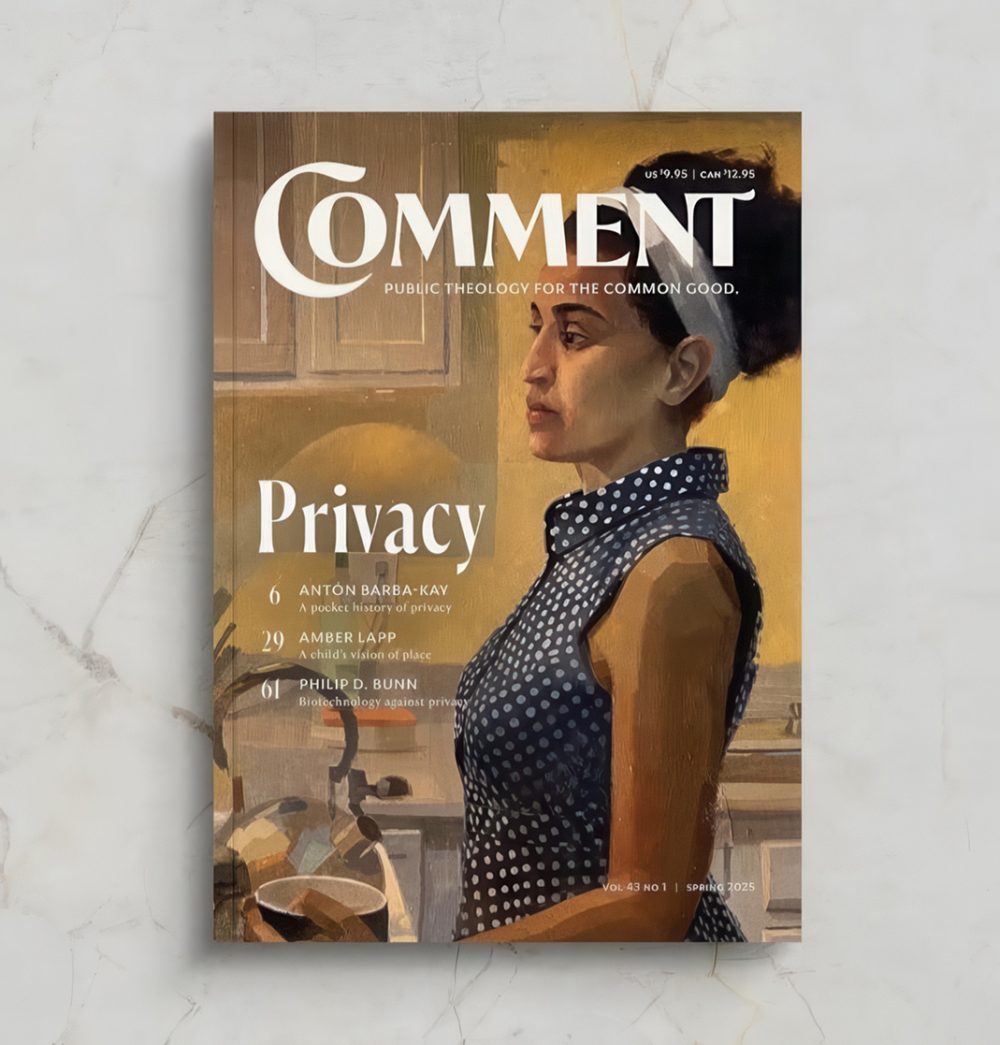
Nathaniel Underwood | Professor Nathaniel Underwood’s research interests include illustration practices, conceptual development applied to advertising, and retaining creative agency within the age of generative A.I. Nathaniel’s conceptual illustrations are part of many significant campaigns and projects, including the development of a 300-foot mural for Burger King’s Innovation Center in Miami and conceptual development for Burger King’s “Whopper Wonderland Village” and Interactive App. Underwood also created a series of photo-realistic illustrations presented to the president of Restaurant Brands International (RBI). The illustrations were part of the new style direction for Fire House Sub’s product photography. Most recently, his narrative artwork, “Yellow Kitchen,” was licensed for the cover art of internationally distributed Comment magazine’s Spring 2025 quarterly edition. In a 2023 campaign, Underwood’s conceptual illustrations were key marketing items within 2800 Popeyes stores.
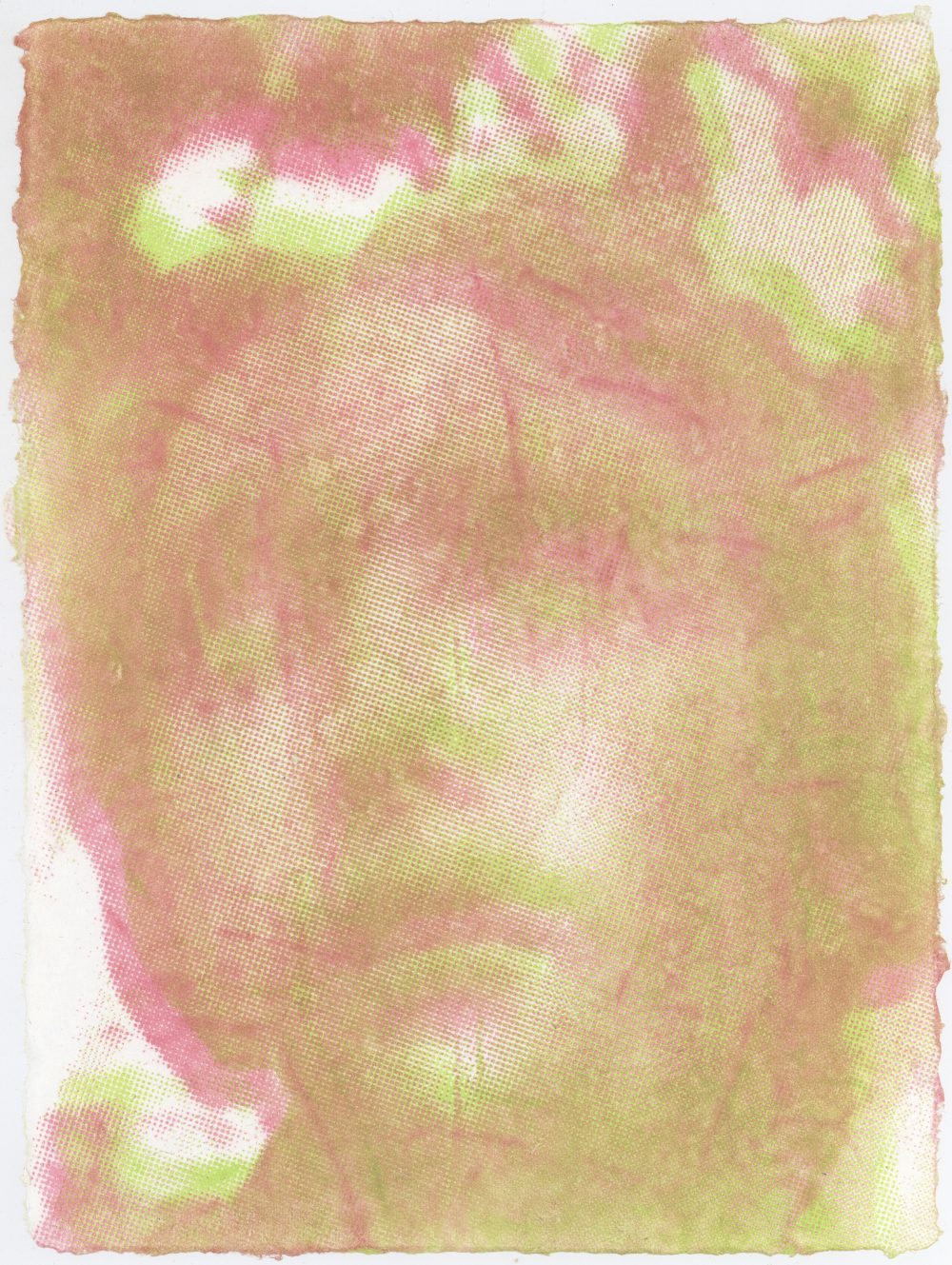
Erik Waterkotte | Professor Erik Waterkotte’s research areas include print and mixed-media, papermaking, installation art, sustainability and material science, analog verse digital technology, semiotics, religion, ritual, and ideology. In his practice, print and papermaking are an act of transference and transformation. He deliberates a variety of spiritual structures to create artworks that are the relics, tapestries, and tabernacles of a unique, evolving belief system. He has received awards and residencies through the Morgan Papermaking Conservatory in Cleveland, Ohio, for his work in papermaking. He recently received an Arts & Science Council Artist Support Grant to further his research into papermaking as a sustainable art practice. In the spring of 2023 he participated in a semester visiting faculty exchange between UNC Charlotte’s Department of Art & Art History and The Eugeniusz Geppert Academy of Art and Design in Wrocław, Poland, and he continues to support exchanges, exhibitions, and collaborations between UNC Charlotte and ASP Wrocław.
Research news

Seven faculty in the College of Arts + Architecture are among the 137 recipients of 2025 Artist Support Grants allocated…
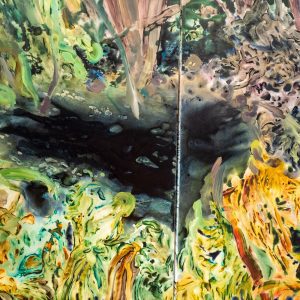
On her first trip to the United States, when she was still a graduate student in her native Poland, Maja…
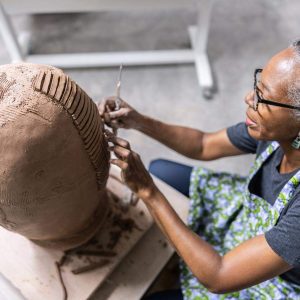
The Charlotte Observer explores the work of Professor of Ceramics Lydia Thompson in a feature story by Liz Bertrand.

Associate Professor of Dance Tamara Williams and Carolina Quintana Ocampo ’21 are among the cohort of 10 artists.
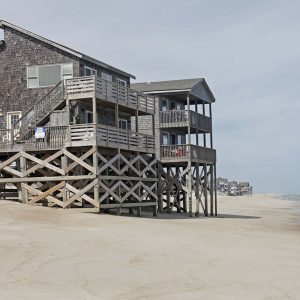
Professor of Art Marek Ranis has received the prestigious KP Prize 2025, awarded by the Kunsthal Aarhus, a contemporary art museum…
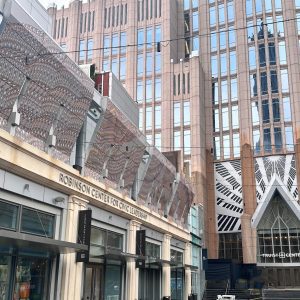
“Interwoven,” by Thomas Schmidt and Erik Waterkotte, takes inspiration from the Truist building’s design, the Piedmont landscape, and Charlotte’s textile…
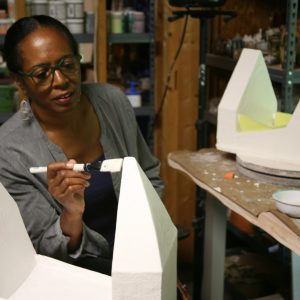
Professor of Art Lydia C. Thompson has received a Lighton International Artists Exchange Program award for travel to conduct research in…

Lisa Homann, Ph.D., co-curated New African Masquerades and co-edited the catalogue.
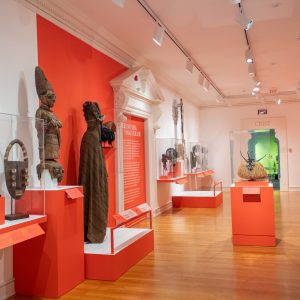
WFAE 90.7FM radio reporter Gwendolyn Glenn speaks to art history professor Lisa Homann about the newly installed African gallery at…
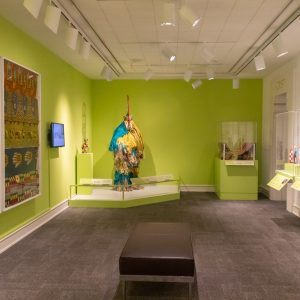
Associate Professor of Art History Lisa Homann joined Mint Museum curator Jen Sudul Edwards for an episode of Piedmont Arts…

WFAE 90.7 FM public radio previews the interdisciplinary research-based exhibition Subcritical, featuring work by Associate Professor of Art Marek Ranis…
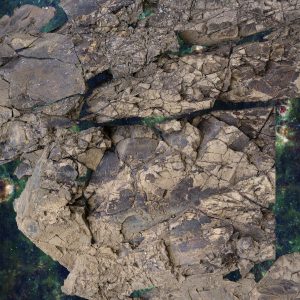
“Subcritical” is a multi-sensory exhibition, book launch, reception and public conversation on April 4.